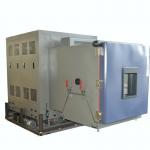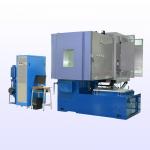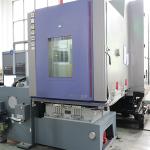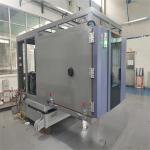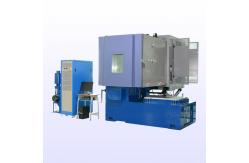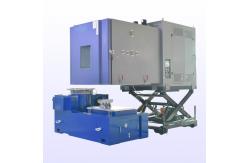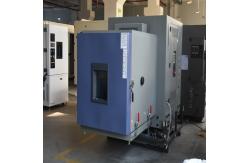In the construction industry, the performance and durability of
building materials products are of utmost importance. The
combination of a Random Vibration Test System and a climate test
chamber offers a comprehensive and essential testing solution
tailored to the unique requirements of building materials. This
integrated system enables manufacturers, researchers, and quality
control professionals to subject building materials products to a
wide range of mechanical vibrations and climate conditions,
mimicking the harsh and variable environments they will encounter
during construction, use, and long - term exposure.
This advanced testing setup is specifically designed for a diverse
range of building materials products, including but not limited to
bricks, tiles, concrete blocks, insulation materials, roofing
materials, and structural components. The primary purpose is to
evaluate how these building materials perform and endure under the
combined influence of random mechanical vibrations and various
climate factors.
By simulating real - world scenarios such as the vibrations from
construction machinery, traffic - induced vibrations in buildings
close to roads, and the effects of different climates (including
extreme temperatures, humidity, rainfall, and solar radiation),
manufacturers can identify potential weaknesses in the design and
composition of building materials. This allows for improvements in
product quality, ensuring that building materials can withstand the
rigors of construction, maintain their integrity over time, and
contribute to the safety and durability of buildings.
- Realistic Random Vibration Simulation
- The random vibration test system is capable of generating a broad -
spectrum random vibration profile, typically covering a frequency
range from 0.1 Hz to 2000 Hz. This wide range enables the
replication of the complex and unpredictable vibration patterns
that building materials may experience in real - world construction
and usage scenarios. The system can precisely control the vibration
power spectral density (PSD), allowing for the accurate
reproduction of different levels of random vibration intensity.
- The random vibration generation is based on advanced algorithms
that take into account the typical vibration sources in the
construction industry. For example, vibrations can originate from
the operation of heavy machinery during construction, the movement
of people and equipment in buildings, and the impact of seismic
activity in earthquake - prone regions. The test system can
generate vibration profiles that closely mimic these real - world
vibrations, helping to identify potential issues such as material
fatigue, cracking, or loosening of components.
- Multi - Axis Vibration Capability
